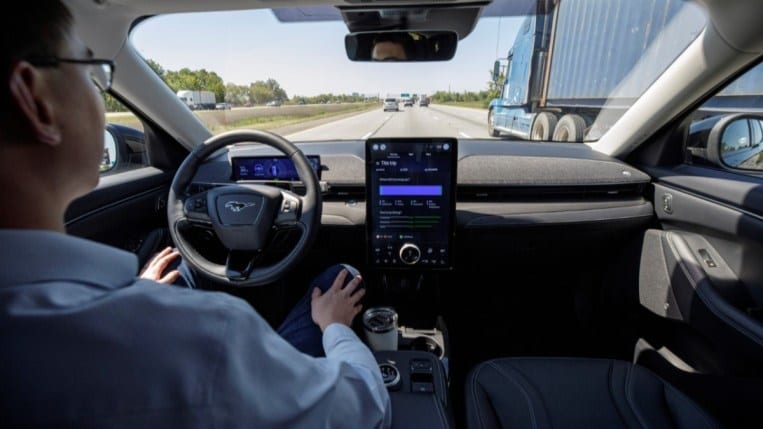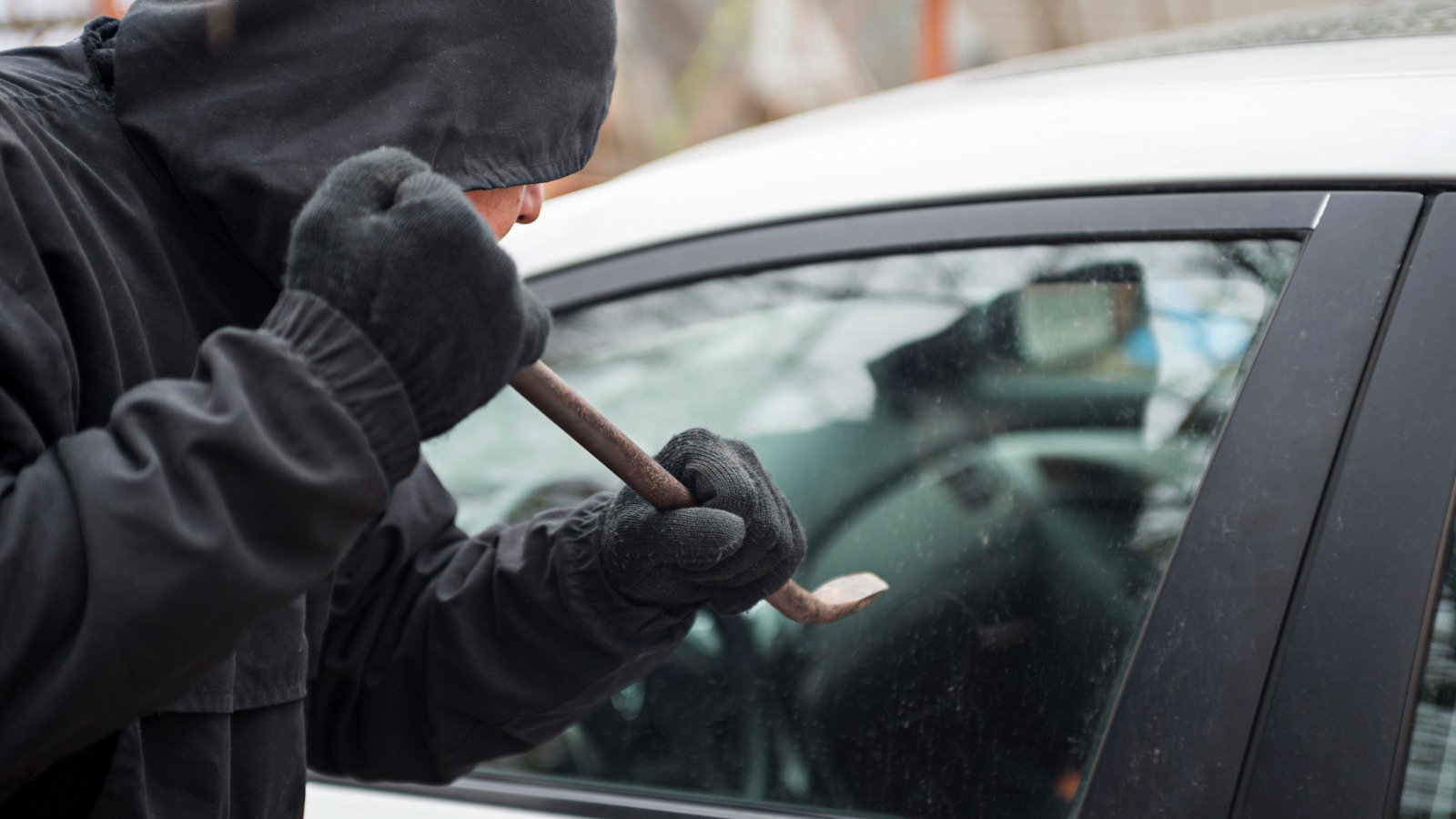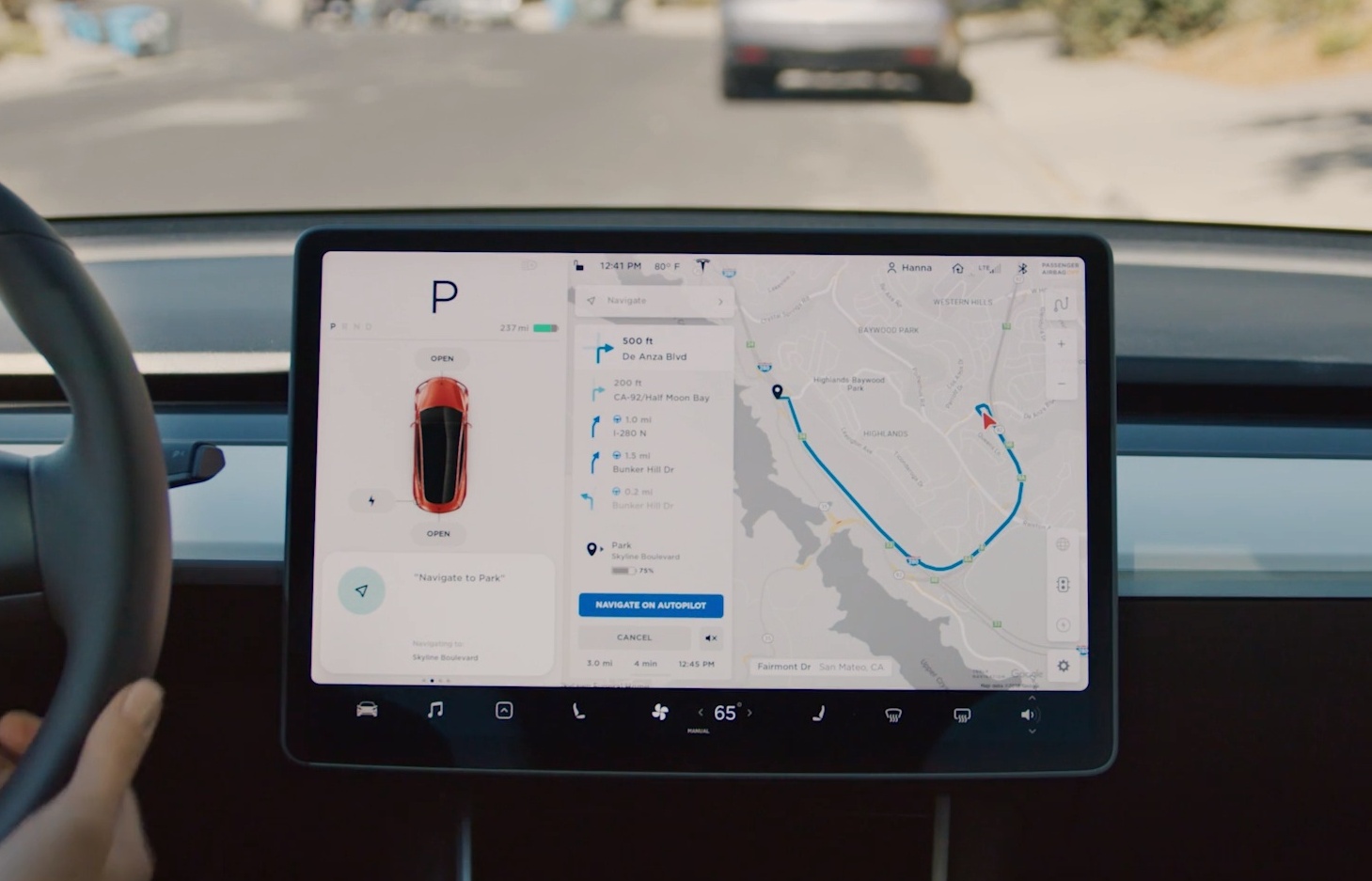
Related: Self-Driving Cars – Everything You Need to Know
Automated driver assistance systems sometimes allow drivers to remove their hands from the wheel in limited circumstances. But they never allow drivers to turn their attention from the road. While CR says the systems can be “eerie” to watch in action, “cars that can truly and safely drive themselves remain a long way off.”
What Assistance Can and Can’t Do
Automakers use a framework of five levels to describe their efforts to build self-driving cars someday. Level 5 would be true self-driving. The highest systems currently for sale qualify as Level 2, though Mercedes says it has received regulatory approval to sell America’s first Level 3 system in Nevada as soon as next month.
The Level 2 systems CR tested combine adaptive cruise control – which keeps your car a safe distance from traffic ahead of it – with lane-centering systems that provide steering adjustments to keep the car in its lane. They “can help make driving easier and less stressful,” says Jake Fisher, Consumer Reports Senior Director of Auto Testing.
“But they don’t make a car self-driving at all,” and prompt drivers to take over if a situation more complicated than steady highway driving occurs.
How CR Tests Them
CR analysts tested 12 active driving assistance systems. They drove with the systems engaged on a test track and a 50-mile loop of public roads, rating each on 40 performance measures “such as steering the car, controlling the speed, and keeping the driver safe and engaged with the act of driving.”
Some of the systems, like the latest example of Super Cruise, can change lanes. CR didn’t evaluate that, or reactions to traffic signs.
The Scores
| Rank | Manufacturer | System Name | Score (out of 100) |
| 1 | Ford/Lincoln | BlueCruise/ActiveGlide | 84 |
| 2 | Chevrolet/GMC/Cadillac | Super Cruise | 75 |
| 3 | Mercedes-Benz | Driver Assistance | 72 |
| 4 | BMW | Driving Assistance Professional | 69 |
| 5 | Toyota/Lexus | Safety Sense 3.0/Safety System+ 3.0 | 65 |
| 6 | Volkswagen/Audi | Travel Assist/Adaptive Cruise Assist | 62 |
| 7 | Tesla | Autopilot | 61 |
| 8 | Rivian | Highway Assist | 59 |
| 9 | Nissan/Infiniti | ProPILOT Assist | 58 |
| 10 | Honda/Acura | Honda Sensing/AcuraWatch | 58 |
| 11 | Volvo/Polestar | Pilot Assist | 53 |
| 12 | Hyundai/Kia/Genesis | Highway Driving Assist | 47 |
Tesla’s Slip
It seems strange for the seventh-place system to get the headlines. But most of the media has led with the story of Tesla’s slip. The company sells itself as the leader in automation research and has courted controversy with the name of its “Full Self-Driving” software and several federal investigations into whether it is safe or marketed deceptively.
Related: Tesla Criminal Investigation Report – What it Means
CR tested the low end of Tesla’s three automation systems, Autopilot. They did not test Full Self-Driving.
Autopilot, CR says, fell short in several ways. “After all this time, Autopilot still doesn’t allow collaborative steering and doesn’t have an effective driver monitoring system. While other automakers have evolved their ACC and LCA systems, Tesla has simply fallen behind,” says Fisher.
CR was particularly concerned that Autopilot doesn’t prompt the driver to take over quickly.
“In our tests, both Mercedes-Benz and Tesla allowed the vehicle to drive down the highway hands-free for about 30 seconds before the first audible alert was given to the driver to put a hand back on the steering wheel,” explains Kelly Funkhouser, CR’s manager of vehicle technology.
Testers also expressed alarm that the system will stop at a stoplight and then resume driving without checking to see whether the driver’s attention flagged during the stop.
Controversy Growing
As automakers have promoted semi-automation technology, safety advocates have warned of risks. A coalition of car safety groups came together last summer to warn that marketing for the systems is often misleading.
A round of testing by AAA last year found that the systems that monitor driver attention are unreliable and easily fooled.
A recent Insurance Institute for Highway Safety survey found that many users of Level 2 technologies admit to performing – like eating and checking emails – behind the wheel even though those systems aren’t supposed to allow that.







